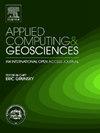Prediction of carbon dioxide phase at bottomhole by adaptive factorization network considering well geometry
IF 3.2
Q2 COMPUTER SCIENCE, INTERDISCIPLINARY APPLICATIONS
引用次数: 0
Abstract
Accurate carbon dioxide (CO2) phase prediction at the bottomhole of injection wells is essential for ensuring safe and efficient CO2 storage and enhanced gas recovery (EGR). Phase misclassification can cause operational inefficiencies, equipment failure, and compromised storage integrity, posing significant risks to CO2 injection projects. While previous studies have contributed to CO2 phase prediction, they have overlooked well geometry effects, which can impact reliability in real-world applications. This study addresses these challenges by introducing a deep learning framework based on the adaptive factorization network (AFN), which enhances CO2 phase prediction accuracy by leveraging feature interactions. The AFN model was trained on ∼43,000 wells across seven major North American shale gas basins, covering a wide range of well geometries and injection conditions. CO2 phases were classified into supercritical and dense categories, reflecting prevailing flow conditions. To enhance practical applicability, we incorporated real-field wellbore data, ensuring alignment with actual injection environments. The standard AFN model achieved an F1-score of 0.94, with data augmentation further improving performance by reducing false predictions by 50 % and increasing the F1-score to 0.97. Rigorous validation demonstrated the model's robustness for optimizing wellhead temperature to achieve the desired CO2 phase transition. By explicitly considering well geometry effects and real-field conditions, this study advances data-driven CO2 injection modeling, providing a scalable, high-accuracy framework for evaluating CO2 storage and EGR feasibility.
考虑井形的自适应分解网络预测井底二氧化碳相
注水井井底准确的二氧化碳(CO2)相预测是确保安全高效的CO2储存和提高气采(EGR)的关键。阶段分类错误会导致操作效率低下、设备故障和存储完整性受损,给二氧化碳注入项目带来重大风险。虽然之前的研究对CO2相预测做出了贡献,但它们忽略了井的几何形状效应,这可能会影响实际应用中的可靠性。本研究通过引入基于自适应分解网络(AFN)的深度学习框架来解决这些挑战,该框架通过利用特征交互来提高CO2相位预测的准确性。AFN模型在北美7个主要页岩气盆地的约43,000口井中进行了训练,涵盖了各种井的几何形状和注入条件。CO2相分为超临界和致密两类,反映了主流的流动条件。为了提高实际适用性,我们结合了现场井眼数据,确保与实际注入环境一致。标准AFN模型的f1得分为0.94,数据增强进一步提高了性能,减少了50%的错误预测,并将f1得分提高到0.97。严格的验证证明了该模型在优化井口温度以实现所需的CO2相变方面的鲁棒性。通过明确考虑井的几何效应和现场条件,该研究推进了数据驱动的二氧化碳注入建模,为评估二氧化碳储存和EGR可行性提供了可扩展的、高精度的框架。
本文章由计算机程序翻译,如有差异,请以英文原文为准。
求助全文
约1分钟内获得全文
求助全文
来源期刊

Applied Computing and Geosciences
Computer Science-General Computer Science
CiteScore
5.50
自引率
0.00%
发文量
23
审稿时长
5 weeks
 求助内容:
求助内容: 应助结果提醒方式:
应助结果提醒方式:


